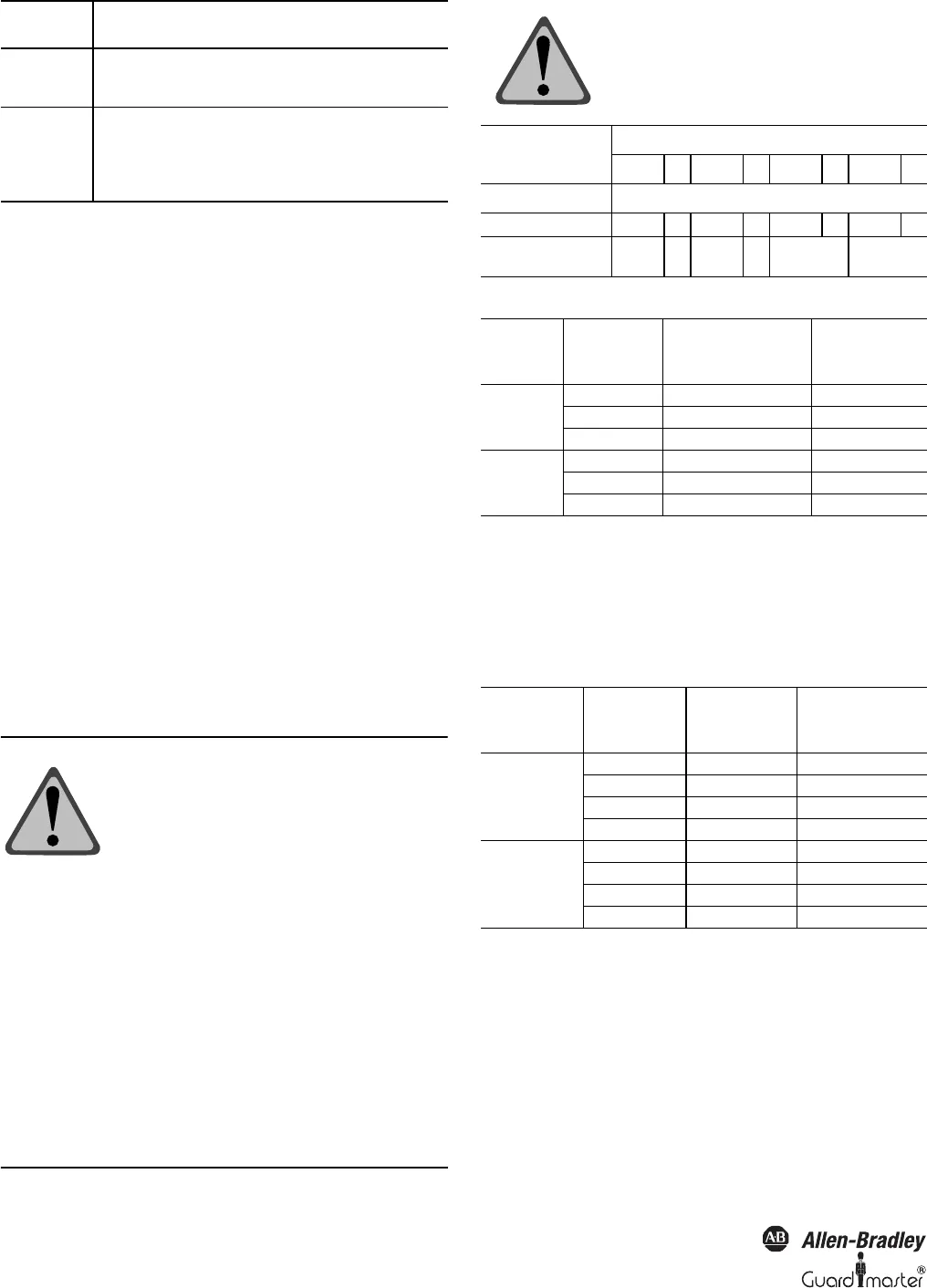
SafeShield Safety Light Curtain Hardware User Manual
18
Table 9: Types of object monitoring for floating blanking
Notes Directly adjacent to the area with floating blanking with
partial object monitoring you can only configure areas
with fixed blanking.
During operation an area with floating blanking with
partial object monitoring is allowed to overlap with an
area of fixed blanking without positional tolerance.
➢ After modifying the blanking, check the protective field with the
test rod. Instructions can be found in the “Daily Functional
Checks of the Protective Device” on page 31.
➢ Also pay attention to the warnings in the related chapter.
Effective Resolution for Blanking
The effective resolution of an optical system depends on both its
optical components and on its configuration. The effective
resolution cannot be higher than the highest possible physical
resolution of the system. However, it can be reduced by the
configuration, e.g. by blanking beams.
In conjunction with size tolerance, the effective resolution is
reduced at the edges of the blanked areas. For blanking with size
tolerance, the effective resolution depends on the physical
resolution and the size tolerance chosen.
Object
monitoring Description
Complete The blanked area must be completely covered by the
object within the size tolerance. If this is not the case, then
the safety light curtain switches to red.
Partial The blanked area does not need to be covered by an
object. However within the size tolerance it can be
partially or completely covered. If you have configured
several areas with floating blanking, then only one area can
use this setting.
ATTENTION: Check the safety
distance!
When using floating blanking with increased
size tolerance, the required safety distance
will depend on the effective resolution (see
Table 10).
• If required, recalculate the safety distance
and readjust it on the machine.
Example: – physical resolution 14mm
– size tolerance –2 beams
– effective resolution 22mm
Calculate the safety distance
with a resolution of 22mm
• Mark the effective resolution on the
information label “Operation with blanking
combined with size tolerance …” on the
related sender and receiver.
Figure 15: Marking the effective resolution on the device label
Table 10: Effective resolution for blanking with size tolerance
For floating blanking with partial object monitoring and for fixed
blanking with increased size tolerance, a hole is produced in the
protective field for technical reasons. With the aid of Table 11 you
can determine the effective resolution of the safety light curtain at
this point and the minimum size of an object to ensure that the
safety light curtain reliably switches to red.
Table 11: Effective resolution for floating blanking with partial object
monitoring and for fixed blanking with increased size tolerance
Mark the effective resolution on the information label “Operation
with reduced resolution or blanking …” on the related sender and
receiver.
Resolution modified
to: (please mark)
Physical resolution
14mm 30mm
Size Tolerance Effective Resolution
1 beam 14mm 40mm
2 beams 22mm Not
possible
Physical
Resolution
Size
Tolerance
Effective Resolution
at the Edges of the
Blanked Area
Permissible
Types of
Blanking
14mm Without 14mm Fixed
–1 beam 14mm Fixed and floating
–2 beams 22mm Floating
30mm Without 30mm Fixed
–1 beam 40mm (no PSDI mode) Fixed and floating
–2 beams Not permitted Not permitted
Physical
resolution
Size of the
blanked area
Blanked beams
(= reduction)
Effective
resolution/
size of the hole
14mm
7.5mm 1 beam 22mm
15mm 2 beams 30mm
22.5mm 3 beams 37mm
n × 7.5mm n beams (n + 2) × 7.5mm
30mm
20mm 1 beam 50mm
40mm 2 beams 70mm
60mm 3 beams 90mm
n × 20mm n beams n × 20mm + 30mm
ATTENTION: During operation with
“Blanking” combined with “Size
tolerance,” the safety distance that
corresponds to the modified resolution is
to be observed.










